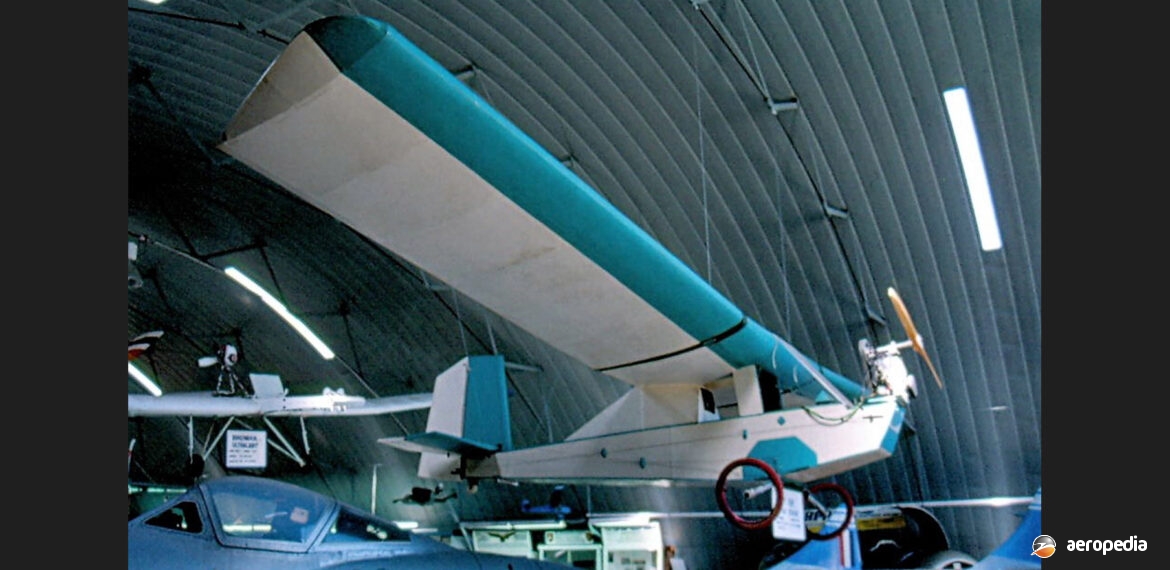Photograph:
An example of the Skypup on display at the Queensland Air Museum at Caloundra, QLD (David C Eyre)
Country of origin:
United States of America
Description:
Single-seat light sport aircraft
Power Plant:
One 16 kw (22 hp) Zenoah G-25 [250 cc] single-cylinder two-stroke air-cooled engine
Specifications:
- Wingspan: 9.44 m (31 ft)
- Length: 4.87 m (16 ft)
- Height: 1.32 m (4 ft 4 in)
- Wing area: 12 m² (130 sq ft)
- Max speed: 111 km/h (69 mph)
- Cruising speed: 86 km/h (55 mph)
- Stalling speed clean: 42 km/h (26 mph)
- Rate of climb: 137 m/min (450 ft/min)
- Fuel capacity: 119 litres (4.1 Imp gals)
- Range: 241 km (150 miles)
- Empty weight: 88 kg (195 lb)
- Loaded weight: 181 kg (400 lb)
History:
The Skypup was one of a number of ultralight designs built and marketed by the Vintage Ultralight Association of Marietta, Georgia, USA models available including the Woodhopper, Gipsy, J-3 Junior, MW-7, Petit Breezy, SR-1 Hornet, Turnercraft and the Whing Ding 71. Powerplants fitted to the series ranged from a 10 kw (12 hp) McCulloch, Cayuna 430, up to the Rotax 447.
The Skypup was an advanced design produced in the 1980s with a cantilever wing and foam with a wood spar cap and wing spars. It had a D-cell leading-edge wrapped in plywood. The ribs were of foam. It was covered with fabric or Dacron. It had a glide ratio of 12:1. It was designed by Steven K Wood of Whitewater, Colorado and made available in plans form in 1982 to amateur builders. It was a single-seater designed to FAR-103 regulations for ultralight aircraft with an empty weight of 115 kg (254 lb). Douglas fir was used in the construction. The wing was built in three sections for transport and storage.
It could be built with an open or fully enclosed cockpit and engines ranging from 13 to 21 kw (18 to 28 hp) could be installed, including the Rotax 277, the Hirth F-33 and the Zenoah G-25 driving a two-blade wooden propeller. Control system was two-axis using only elevator and rudder controls, roll being available by rudder and a generous dihedral angle. It was said to be stall and spin proof.
One example is known to survive at the Queensland Air Museum at Caloundra, QLD, this aircraft being built by William Blandford of Nambour, and was donated to the museum when it was retired.

